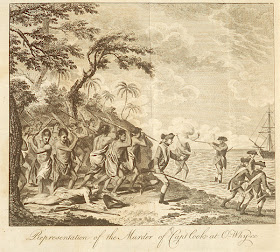 |
| Karl and Mazepa at Poltava by Gustav Olaf Cederström Mazepa changed sides, supporting Karl upon learning that Peter intended to hand over the Ukraine to Alexander Menshikov. |
Sadly, the Battle of Poltava, in what is today the Ukraine, was a decisive victory for Tsar Peter the Great over the Swedish forces of Karl Gustav (Karl XII). It was a watershed moment, not only in the Great Northern War, but in Swedish and Russian history, which began the decline of Swedish hegemony and the rise of Imperial Russia. In the previous decade, Karl had defeated and absorbed Denmark and Norway into his sphere of influence, when the two countries allied with Russia to invade the Swedish protectorates of Holstein-Gottorp, Livonia, and Ingria. By 1702, Russia alone remained in the field, battle-worn, but not defeated. Karl then invaded neutral Poland on his march east towards Moscow. Despite a looming resurgence of the Tsarist armies, Karl scored a string of incredible victories (Klizsnow, Narva, Holowczyn) consistently against forces three times the strength of his own armies[1].
 |
| Karl's Swedes assault the first and second lines of Peter's defenses. (Author) |
Karl opened the dance at Poltava with a general assault by his infantry against the Russian fortifications in the first line. Supported only by four field guns to Peter's ~39 cannon, this was madness (...or hubris?). As the Swedish infantry surged through the Russian earthworths, Karl's cavalry passed through the lines and initiated a cavalry engagement behind the second line.
 |
| Karl's infantry reform to the north of Peter's third line, as the cavalry are scattered to the wooded marshes to the northeast and west. (Author) |
As Karl reforms his line for a final assault on Peter's third line, his cavalry is cut off, the victims of their own success. To the south west they are cut to pieces in the marshes.
 |
| Peter's counterattack, supported by artillery and flanking cavalry proves successful. (Author) |
After the defeat at Poltava, Karl fled with his royal retinue to the Ottoman Empire, while Prussia, Norway, and Russia carved up the Swedish Empire. In 1714 he escaped house arrest, beginning the formation of a new army in Swedish Pomerania, whereupon he returned to Sweden and invaded Norway again in 1716. He was killed at the battle of Frederickshald in a second subsequent invasion in 1718.[2] Ultimately, his defeat and death contributed to the enslavement of Ukraine by the Tsars, and a shift in power with the rise of Imperial Russia and eventually in central Europe, the Prussian state.
 |
| Funeral Transport of Karl XII by Gustav Olaf Cederström Karl was killed by artillery fire at Frederikshald during his 1718 invasion of Norway after returning from exile in the Ottoman Empire. |
The links below are clips below are from a Russian-made film, The Sovereign Servant (2007) which questionably portrays Karl as a dandy in a resplendant uniform. Karl, a soldier's soldier, most likely wore a plain campaign uniform as above. The Swedes were also significantly outnumbered by the Russians (3-1). I also question the accuracy of Swedish Infantry attacking into the teeth of artillery field fortifrications unsupported, but the editing and costuming remains impressive. Karl was by all accounts a tactical genius, could this have been the rashness of which Voltaire spoke, that became his undoing? Every General who fights with 4:1 odds (20:1 artillery) would be accused of rashness...or genius if he manages victory.
The Battle of Poltava II
The Battle of Poltava III
-Cincinnatus
"Surely the churning of milk bringeth forth butter, and the wringing of the nose bringeth forth blood: so the forcing of wrath bringeth forth strife."
-Proverbs 30:33
[1] http://www.encyclopediaofukraine.com/pages/P/O/PoltavaBattleof.htm, accessed 10May12.
[2] http://www.britannica.com/EBchecked/topic/107246/Charles-XII#toc1286, accessed 10 May 12.
[3] Volatair, History of Charles, King of Sweden, Winifred Todhunter, trans. Dutton, New York, 1908, 1912 ed., (333-4).
The Battle of Poltava III
-Cincinnatus
"Surely the churning of milk bringeth forth butter, and the wringing of the nose bringeth forth blood: so the forcing of wrath bringeth forth strife."
-Proverbs 30:33
[1] http://www.encyclopediaofukraine.com/pages/P/O/PoltavaBattleof.htm, accessed 10May12.
[2] http://www.britannica.com/EBchecked/topic/107246/Charles-XII#toc1286, accessed 10 May 12.
[3] Volatair, History of Charles, King of Sweden, Winifred Todhunter, trans. Dutton, New York, 1908, 1912 ed., (333-4).




























